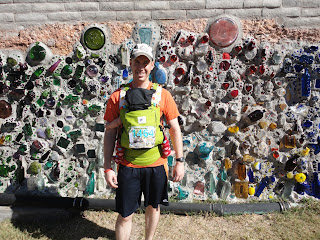 When Q-ball started crawling, she did not only reach a significant physical milestone, but also huge emotional and cognitive developments. She now has the ability to see that she is a separate identity from me, her mama. Ironically, this ability to move away from me is a significant step towards greater attachment between us. Margaret Mahler, a psychoanalyst whose own mother kept her at a distance, developed a theory that describes the normal phases of separation for infants and toddlers. Over a period of seven phases, from birth to 30 months, the baby moves from only acknowledging inner physiological sensations in a half-awake state to the knowledge that he is a separate being from his mother who is about to be able to do his own thing (which can be quite the cause of heartache for the mamas!) Her theory is known as the separation/individuation theory.
When Q-ball started crawling, she did not only reach a significant physical milestone, but also huge emotional and cognitive developments. She now has the ability to see that she is a separate identity from me, her mama. Ironically, this ability to move away from me is a significant step towards greater attachment between us. Margaret Mahler, a psychoanalyst whose own mother kept her at a distance, developed a theory that describes the normal phases of separation for infants and toddlers. Over a period of seven phases, from birth to 30 months, the baby moves from only acknowledging inner physiological sensations in a half-awake state to the knowledge that he is a separate being from his mother who is about to be able to do his own thing (which can be quite the cause of heartache for the mamas!) Her theory is known as the separation/individuation theory. According to Mahler, at 6 months, Q-ball “hatched,” becoming her own person who is very aware she is separate from me. Q-ball’s actions at this stage mirrored many of those observed by Mahler: grapping mama’s glasses, digging her nails into mama’s lips, and pulling mama’s hair. This is the “separate” part of Mahler’s theory. She’s also loved taking off crawling and exploring her now accessible world. This is the “individuation” part of Mahler’s theory.
Today, Q-ball turned 7 months old, and I’ve noticed some other firsts over the past few days. She’s occasionally shy around strangers - turning her head to my chest to avoid them or actually whining when they try to woo her. Cue the early development of stranger anxiety. Her reactions are mild, however, compared to some observed by Mahler. In these more severe cases, the babies had likely not developed basic trust and strong attachments earlier in infancy, often a result of under-responsive parents (i.e.- those who do not respond to baby’s basic needs of food, sleep, and comfort at the baby’s demand.) These stress reactions, then, serve as one of the first indicators of the importance of being very responsive to baby’s needs from birth.
As Q-ball continues to crawl and eventually walk around her new world, her curiosity and excitement about the world around her should continue to grow. During this period of time, Mahler’s research led her to the same conclusions concerning the mother-infant relationship as Ainworth’s research had previously revealed. That is, the mother should serve as a “secure base” for the infant’s explorations. The mother should encourage her baby’s new independence by not being overly controlling or disruptive in her baby’s play. Simultaneously, she must also remain “emotionally [available]” for the baby- a presence in the background should baby look back for his mother’s approval and encouragement of his actions. Interestingly, cases in which parents are overly anxious of or involved in a baby’s explorations produce similar emotional disorders and excessive clinginess as parents who are unresponsive to their infant’s wants and needs.
So, in order to serve as a secure base for Q-ball, we plan to make nearly all of our next home a “yes” environment for her (the notable exception being Daddy’s man cave.) In this way, she’ll be able to explore as she pleases with little disruption from me. I plan to be emotionally available and guide her at times but, largely, allow her to develop her independence. Maybe I’ll be able to check up on some reading as while I’m lounging on the couch! (It’ll never happen, I know, but it’s my current daydream…)
How did you serve as a secure base for your baby while he was learning to crawl or walk? What did you do with all of your new “free time?”

















